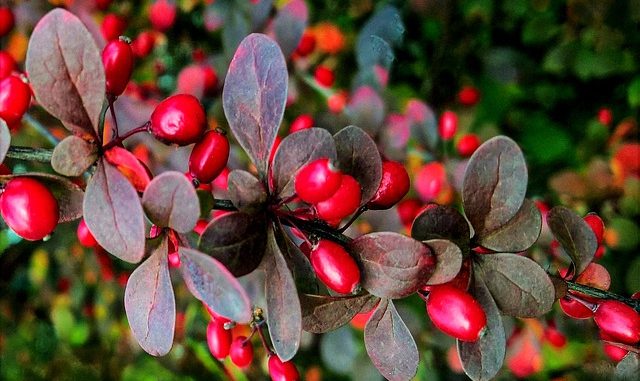
Black Barberry (Berberis integerrima) is a particularly rich source of many useful bioactive compounds such as anthocyanins, catechins, gallic acid, chlorogenic acid, caffeic acid, and rutin (Gungdogdu, 2013).
A number of barberry species exist including Berberis vulgaris. Which is one of the most commonly encountered. All barberries belong to the family Berberidaceae.
The processing and properties of barberry anthocyanins have been examined (Berenji Ardestani et al., 2016).
Barberries have various pharmacological benefits (El-Wahab et al., 2013). These properties are:-
- antimicrobial,
- anti-inflammatory,
- anticancer,
- antidiabetic,
- antihyperlipidemia,
- antihistaminic,
- anticholinergic,
- antipyretic,
- antioxidant
The one species B. integerrima has a higher anthocyanin and yotal phenolic content that B. vulgaris. The main anthocyanins in B. integerrima are delphinidin-3-monoglucoside, cyaniding-3-monoglucoside, petunidin-3-monoglucoside, and peonidin-3-monoglucoside.
References
Abd El-Wahab, A. E., Ghareeb, D. A., Sarhan, E. E., Abu-Serie, M. M., & El Demellawy, M. A. (2013). In vitro biological assessment of Berberis vulgaris and its active constituent, berberine: antioxidants, anti-acetylcholinesterase, anti-diabetic and anticancer effects. BMC complementary and alternative medicine, 13(1), 1-12 (Article).
Berenji Ardestani, S., Sahari, M. A., & Barzegar, M. (2016). Effect of extraction and processing conditions on anthocyanins of barberry. Journal of Food Processing and Preservation, 40(6), 1407-1420. (Article)
Leave a Reply